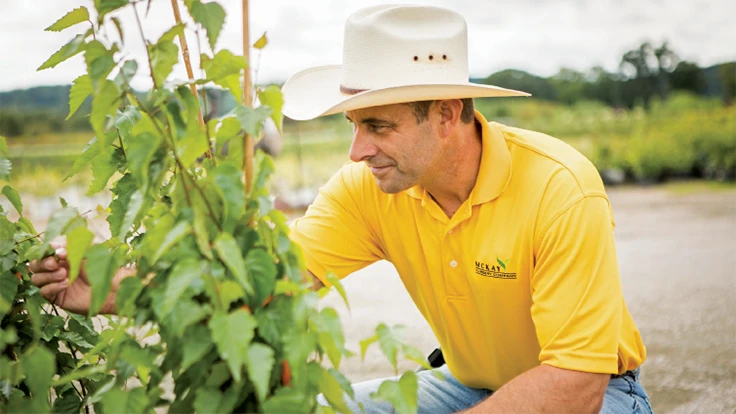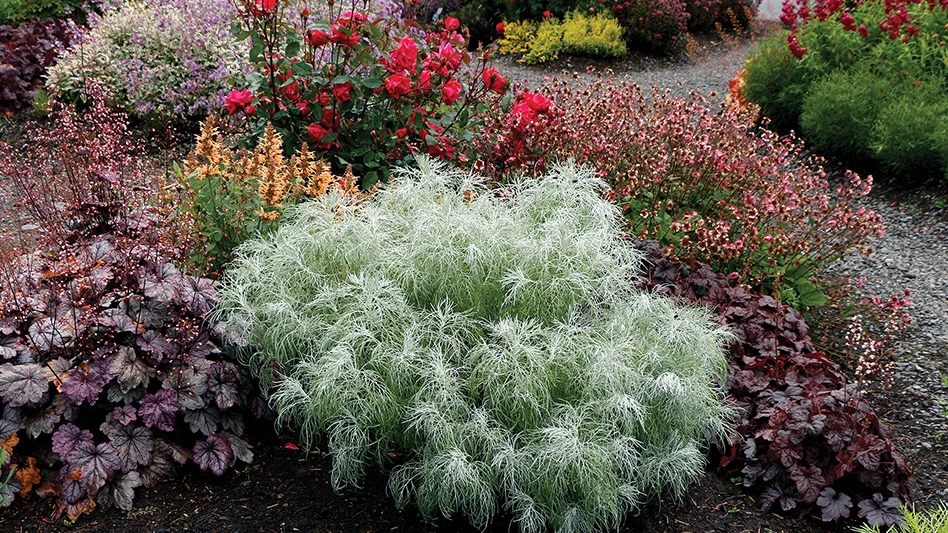
Some two years ago, McKay Nursery in Waterloo, Wisc., was in the midst of a significant transition. Some key staff members had retired, and the nursery was preparing to exchange much of its traditional production practices for newer, more efficient systems. At the same time, the state of Wisconsin’s Department of Agriculture was serendipitously looking for a nursery to participate in a pilot program that addressed a risk-based nursery and greenhouse certification of plants.

Tom Buechel, head of production at McKay, received an application from Brian Kuhn, director of Wisconsin’s Bureau of Plant Industry, for this new program called the Systems Approach to Nursery Certification.
“From previous conversations, Brian knew we were in the process of making some major changes in production,” says Buechel. “We’d been investigating the U.S. Nursery Certification Program and looking at some of the food safety programs to help us with our goals of adopting a more proactive approach to producing the cleanest and highest quality plants we could achieve.”
As the nursery investigated the Systems Approach to Nursery Certification, or SANC, it became clear they’d found the best tools to transition to the next level.
The foundation of SANC involves risk management: Preventing problems from coming in to the nursery; monitoring and scouting crops; accurately diagnosing pests and diseases; addressing problems and documenting them; and performing audits to avoid shipping pests and pathogens. SANC requires growers to identify critical control points, which are specific steps in the process where procedures can be applied to most efficiently manage risk.
“It’s putting in a HACCP [Hazard Analysis Critical Control Point] – the parallel in food safety – approach to the nursery process,” says Kuhn, who is also on the SANC evaluation committee. “It not only brings cleaner, healthier nursery stock to the market, but higher quality stock. It brings structure to production and accountability to staffs.”

SANC is a voluntary, audit-based program. It’s a three-way partnership involving the National Plant Board, various parts of the green industry, and USDA’s Animal & Plant Health Inspection Service. Certification is based on how plants are produced rather than exclusively on how those plants look at the time of a single inspection.
Systems approaches look at potential hazards throughout the production and handling processes – what can go wrong, where – and points where proactive measures can be applied, like sanitation, a diagnostic test, or a treatment, says Craig Regelbrugge, senior vice president of industry advocacy and research programs at AmericanHort. “In such systems, the role of inspectors often shifts from looking for pests to ensuring compliance. In other words, is the grower doing what he or she said would be done.”
Earlier this year, McKay Nursery was one of two growers to be SANC certified, along with Pennsylvania-based Star Roses and Plants/Conard-Pyle. The two growers are part of a total lineup of eight growers participating in the pilot program.
McKay faced a set of different circumstances from some of the other participants because of the diversity of their business. McKay is a wholesale nursery that produces B&B, container and bareroot plants. McKay is also a retailer, operates an online store, and ships plants across state lines.
During the certification process, McKay developed best nursery practices (BNPs), which clearly identify steps in all aspects of production such as sanitation, scouting, and shipping and receiving procedures, says Joe Kern, container manager.
“This allowed us to better educate our employees on what to look for and what to do if they found a problem,” Kern says. “One of the biggest benefits of this process and this certification is that it allows for better employee engagement and accountability on all levels.”
The BNPs were created with a simple format that’s easy to understand, adds Sam Noel, land manager at McKay.
“They’re in a simplified presentation that allows us to easily train our employees and they’re written in a way that we can easily post them in highly visible places,” Noel says.
All BNPs are posted in English and Spanish. McKay created the red tag procedure BNP. If any crew member sees a problem, they mark it with a red tag and notify a supervisor, who then performs the proper follow-up procedures. The red tag acts as a visual key and creates much more employee engagement, Noel says.

“Now everyone is looking out for red tags and red-tag situations, not just the crop assurance leader,” he adds.
The red-tag procedure is the most powerful tool McKay has given the employees, Buechel says.
“Employees are always on the lookout for issues. They’re not just going through the motions. It’s created a lot of enthusiasm within the nursery,” Buechel says.
For more:http://sanc.nationalplantboard.org; www.mckaynursery.com
Photos by Eric Tadsen
Top photo: McKay Nursery's Tom Buechel says the work to implement SANC has been worth it.
Latest from Nursery Management
- Monarda punctata
- Farm, horticulture industry organizations file lawsuit against U.S. DOL for H-2A rule
- Expenses and challenges
- FMC, Envu complete sale of FMC’s Global Specialty Solutions business
- Registration for International Plant Trialing Conference now open
- USDA Deputy Secretary Xochitl Torres Small visits Dramm Corp.
- 2025 Farwest Show seeking speakers
- Prices and market segments





